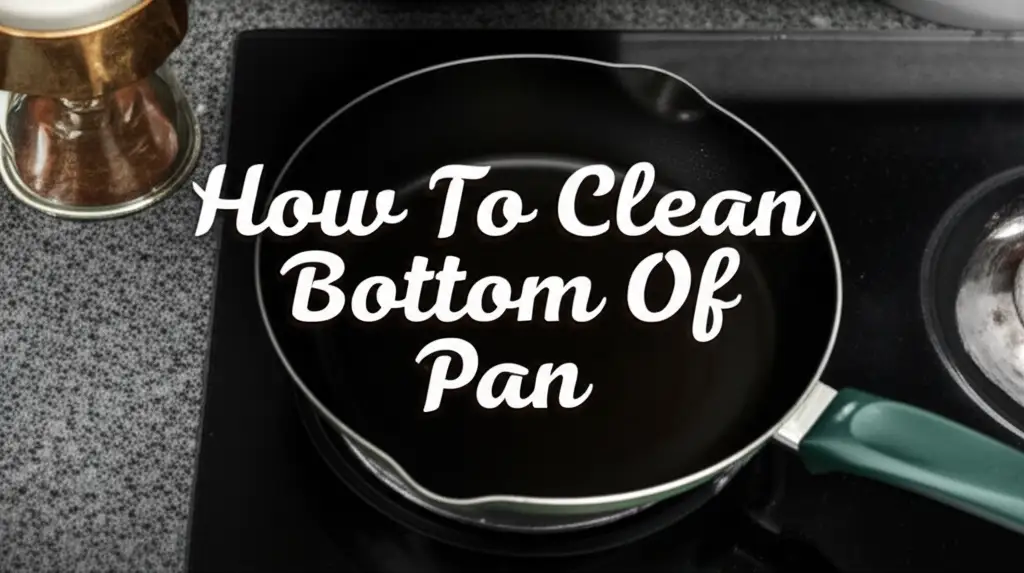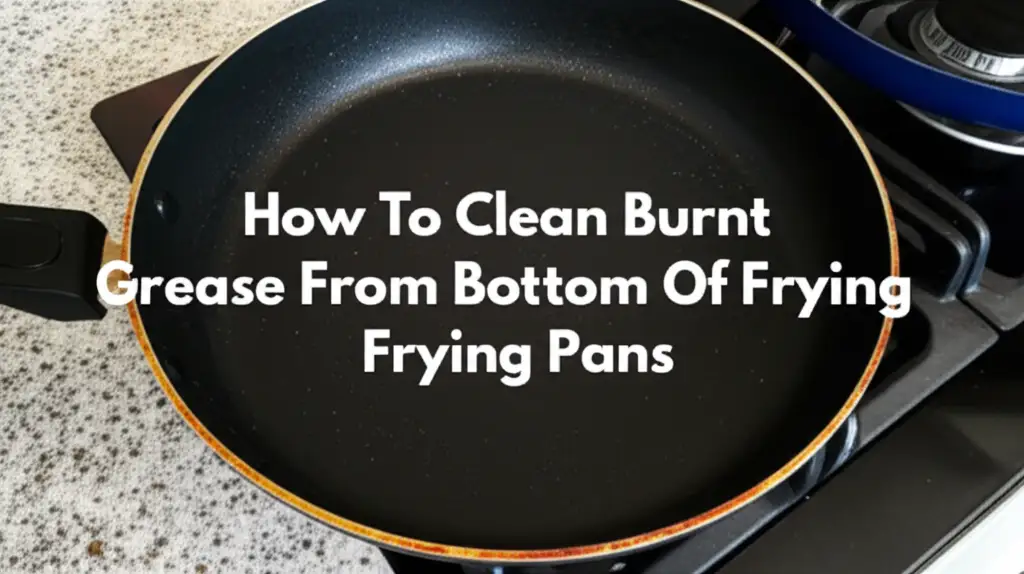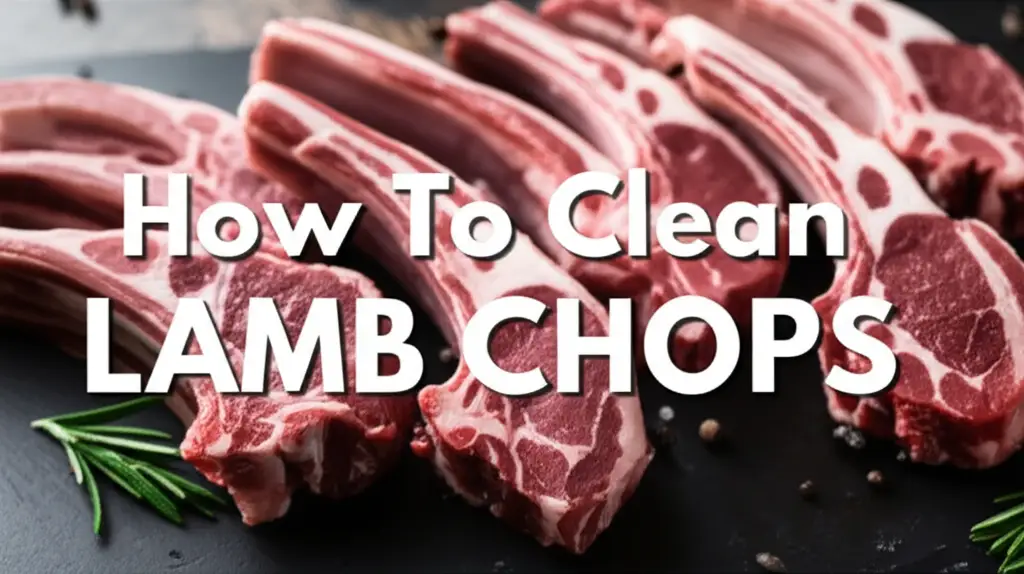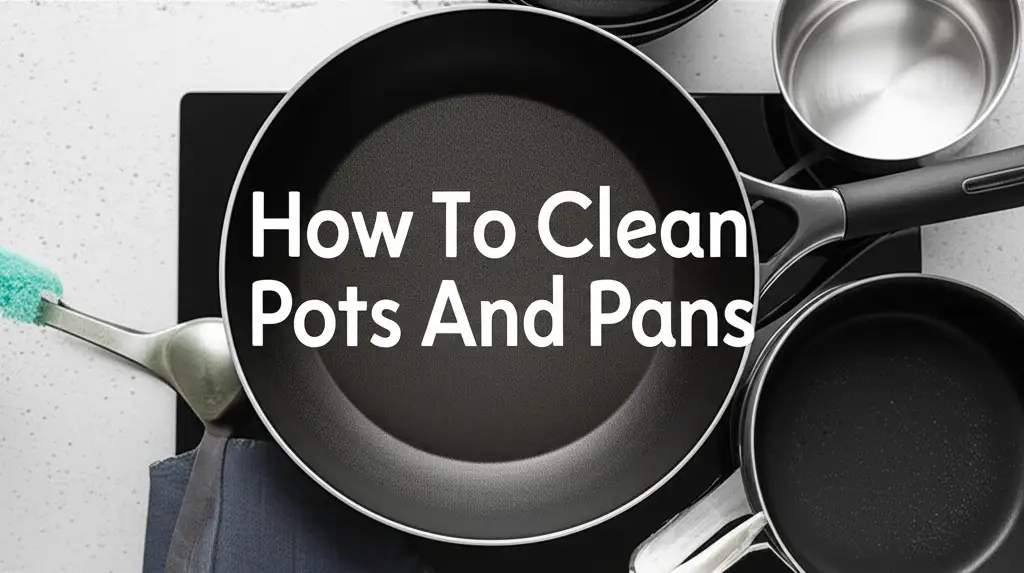· Kitchen Cleaning · 14 min read
How To Clean Baked On Grease From Pans
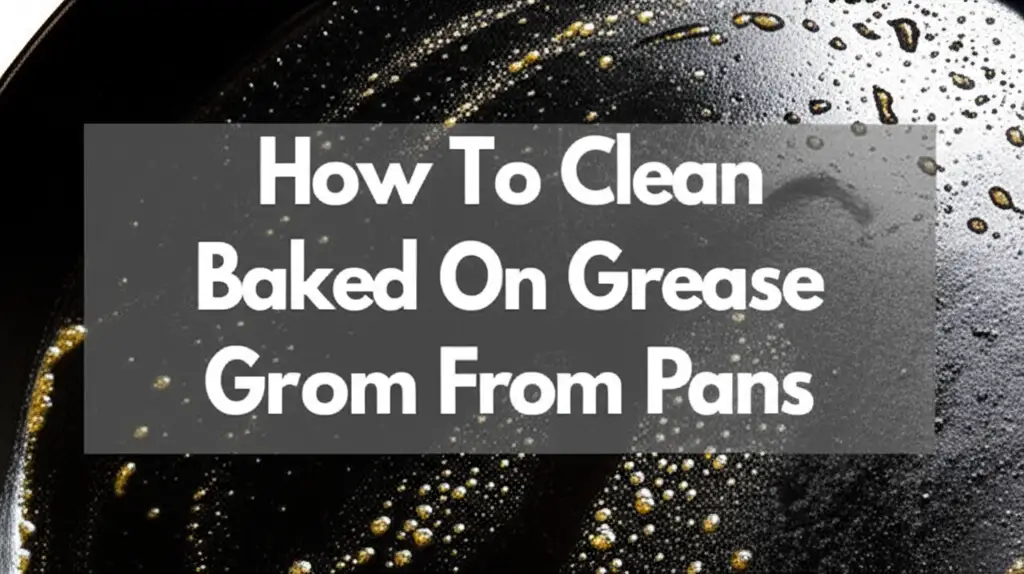
How To Clean Baked On Grease From Pans: Your Ultimate Guide
Baked-on grease on pans presents a common kitchen challenge. This stubborn residue makes your cookware look old and unclean. It also affects cooking performance. You might feel frustrated when regular washing does not work. This guide provides clear steps to clean baked on grease from pans effectively. We cover various methods from simple household items to specific techniques for different pan materials. You will learn easy ways to restore your pans. I will share methods for stainless steel, cast iron, and non-stick surfaces. We aim for spotless results and durable cookware.
Takeaway
- Pre-Soak Pans: Loosen baked-on grease with hot water and dish soap before scrubbing.
- Use Baking Soda: Create a paste or boil with baking soda and water to lift tough stains.
- Try Vinegar: Combine vinegar with baking soda for a powerful chemical reaction.
- Apply Natural Abrasives: Salt and lemon work well for gentle scrubbing on some surfaces.
- Address Specific Materials: Tailor cleaning methods for stainless steel, cast iron, and non-stick pans.
- Prevent Future Buildup: Clean pans immediately after use and use proper cooking temperatures.
To clean baked on grease from pans, combine powerful degreasing agents with abrasive action. Begin by soaking the pan in hot, soapy water. Then, apply a paste of baking soda and water or use a boiling method with vinegar. Scrub gently with a non-scratch pad to remove stubborn layers.
Understanding Baked-On Grease Buildup on Pans
Baked-on grease is a common problem in many kitchens. It forms when oil or fat heats to a high temperature and then burns onto the pan surface. This residue solidifies and becomes very hard to remove with just soap and water. Over time, layers of grease build up, making the pan look dirty. This buildup also creates an uneven cooking surface. This can affect how food cooks.
The chemical structure of the grease changes under heat. It polymerizes, meaning it forms a plastic-like coating on your pan. This makes it stick very tightly. Regular scrubbing brushes often cannot break this bond. You need special techniques to break down these tough layers. This is why many people seek better ways to clean their cookware. Understanding this process helps us choose the right cleaning methods. We need methods that target these specific chemical bonds.
This stubborn grime can reduce the lifespan of your pans. It also poses a hygiene concern. Old grease can harbor bacteria if not cleaned properly. Removing it makes your pans safer for food preparation. It also makes them look new. Let’s explore effective ways to tackle this common kitchen issue. You can achieve cleaner, more efficient cookware.
The Power of Baking Soda and Vinegar for Grease Removal
Baking soda and vinegar are household heroes for cleaning. They are very effective when you need to clean baked on grease from pans. Baking soda is a mild abrasive. It helps scrub away grime without scratching surfaces. Vinegar, an acid, works to dissolve mineral deposits and grease. Together, they create a powerful reaction. This reaction helps lift stubborn baked-on residues.
To use this method, first, put a layer of baking soda on the greasy pan. Then, spray or pour white vinegar over the baking soda. You will see fizzing as they react. This fizzing action helps loosen the grease. Let this mixture sit for 15 to 30 minutes. For very tough stains, let it sit for a few hours or even overnight. This gives the ingredients time to work their magic.
After soaking, use a non-abrasive scrubber or sponge. Scrub the pan in circular motions. The paste helps lift the grease away. Rinse the pan thoroughly with warm water. You can repeat the process if some grease remains. This method works well for many pan types, including stainless steel. It is a natural and safe way to clean your cookware. For more details on using baking soda for stainless steel, you can check out this guide on how to clean stainless steel pans with baking soda. Also, for other household applications of these two powerful ingredients, learn how to clean dishwasher with vinegar and baking soda.
Boiling Water and Dish Soap: A Simple Start
Sometimes, the simplest methods are the most effective. Boiling water with dish soap is a great first step to clean baked on grease from pans. This method is especially good for grease that has not been deeply set for a long time. The hot water helps soften the hardened grease. Dish soap then works to break down the oil. This makes the grease easier to wipe away.
First, fill your pan with water. Add a few drops of dish soap. Use a good degreasing dish soap for best results. Place the pan on the stove and bring the water to a boil. Let it simmer for 10 to 15 minutes. As the water boils, the heat penetrates the baked-on grease. It loosens its grip on the pan surface. The soap molecules surround the grease particles. This allows them to become suspended in the water.
After simmering, carefully pour out the hot water. Be cautious as the pan will be very hot. While the pan is still warm, use a plastic scraper or a non-scratch sponge. Gently scrape or scrub the loosened grease. You will find that much of the residue lifts off easily. For more stubborn spots, you might need to repeat the boiling process. This method is safe for most pan materials, including non-stick surfaces. It is a gentle yet effective way to start removing tough grime.
Using Natural Abrasives: Salt and Lemon
Natural abrasives offer a gentle yet powerful way to clean baked on grease from pans. Salt and lemon are an excellent combination for this task. Salt acts as a mild scrubbing agent. It provides friction to lift away stuck-on particles. Lemon juice contains citric acid. This acid helps dissolve grease and grime. It also leaves a fresh scent. This method is great for less severe baked-on grease or as a follow-up to other treatments.
To use salt and lemon, first ensure your pan is slightly warm. You can heat it on the stove for a minute or two. This helps soften the grease. Sprinkle a generous amount of coarse salt onto the greasy areas. Himalayan salt or kosher salt works best. Then, cut a lemon in half. Use the cut side of the lemon as a scrubbing tool. Press the lemon half onto the salt and rub it vigorously over the baked-on grease. The salt will stick to the lemon. This creates a natural scouring pad.
As you scrub, the lemon juice mixes with the salt. This forms a natural paste. This paste helps break down the grease while the salt physically removes it. Continue scrubbing until the grease starts to lift. Rinse the pan with warm water. You can also wipe it clean with a damp cloth. This method is safe for most metal pans. It is especially good for stainless steel. However, avoid using it on delicate non-stick coatings.
Tackling Stubborn Stains with Cream of Tartar
When baked-on grease feels impossible to remove, cream of tartar can be your secret weapon. This acidic powder is a common baking ingredient. It also has surprising cleaning power. Cream of tartar reacts with metals. It helps lift stubborn stains and discoloration. This makes it excellent for restoring shine to stainless steel and aluminum pans. It is a step up for very tough, set-in grease.
To use cream of tartar, you will need water and the powder. For a full pan, fill it with water. Add two tablespoons of cream of tartar. Bring this mixture to a boil on your stovetop. Let it simmer for 10 to 15 minutes. The boiling action helps activate the cream of tartar. It also loosens the baked-on layers. You will notice the water changing color as the grime lifts.
For targeted spots, you can make a paste. Mix a small amount of cream of tartar with just enough water to form a thick paste. Apply this paste directly to the baked-on grease. Let it sit for at least 30 minutes, or longer for very stubborn areas. After soaking, scrub the pan with a non-scratch pad or brush. Rinse thoroughly with warm water. This method is very effective for discolored and heavily greased pans. Always test on an inconspicuous area first if you are unsure about your pan’s material.
Cleaning Baked-On Grease from Specific Pan Materials
Different pan materials require different cleaning approaches. What works for stainless steel might harm a non-stick pan. Knowing your cookware material helps you choose the safest and most effective method. This ensures your pans last longer and stay in good condition.
Stainless Steel Pans
Stainless steel pans are durable. They can handle tougher cleaning methods. For burnt grease from the bottom of frying pans, a combination of baking soda, vinegar, or even cream of tartar works well.
- Baking Soda Paste: Mix baking soda with a little water to form a thick paste. Apply it to the grease. Let it sit for a few hours or overnight. Scrub with a non-scratch pad. This is very effective for how to clean burnt oil from stainless steel pan residue.
- Boiling Method: Fill the pan with water and a few drops of dish soap. Boil for 10-15 minutes. Scrape with a wooden or plastic utensil.
- Bar Keepers Friend: This cleanser is designed for stainless steel. It effectively removes tough stains and grease. Follow package directions carefully.
Cast Iron Skillets
Cast iron pans need special care to maintain their seasoning. Seasoning is a protective layer of polymerized oil. This layer gives cast iron its non-stick properties. You want to remove baked-on food, not the seasoning itself. For deep cleaning crud off a cast iron skillet, avoid harsh soaps or abrasive scrubbers.
- Salt and Oil Scrub: Sprinkle coarse salt (like kosher salt) into the pan. Add a small amount of cooking oil. Use a paper towel or stiff brush to scrub the pan. The salt acts as a gentle abrasive.
- Boiling Water: For really stubborn spots, boil water in the pan for a few minutes. Then use a wooden or plastic scraper to remove loosened bits.
- Re-seasoning: After a deep clean, always re-season your cast iron pan. Apply a thin layer of cooking oil. Heat it in the oven at 375°F (190°C) for an hour. Let it cool completely.
Non-Stick Pans
Non-stick pans are delicate. Harsh abrasives or strong chemicals can damage the non-stick coating. This makes the pan stick and potentially release harmful fumes. Always use gentle methods.
- Warm Soapy Water Soak: Fill the pan with warm water and dish soap. Let it soak for 20-30 minutes. This softens the grease.
- Soft Sponge or Cloth: Use a soft sponge or cloth to wipe away the loosened grease. Never use metal scrubbers or abrasive pads.
- Baking Soda Paste (Gentle): For light grease, make a very thin paste of baking soda and water. Apply gently with a soft cloth. Do not scrub hard. Rinse completely.
- Avoid High Heat: High heat can cause grease to bake on more quickly and damage the coating. Use medium heat when cooking.
Preventing Baked-On Grease Buildup
The best way to deal with baked-on grease is to prevent it from forming. Good habits in the kitchen can save you a lot of scrubbing time. Prevention keeps your pans cleaner for longer. It also extends their lifespan. Regular care is key to maintaining spotless cookware.
Here are simple steps to prevent future buildup:
- Clean Immediately After Use: Do not let pans sit with food residue. As soon as the pan cools slightly, wash it. Warm, soapy water works best for fresh grease. This stops grease from hardening onto the surface.
- Wipe Excess Oil: Before cooking, use only enough oil. Wipe away any excess. After cooking, if there is a lot of leftover oil, wipe it out with a paper towel before washing. This reduces the amount of grease that can bake on.
- Use Proper Cooking Temperatures: Cooking at very high temperatures can burn oils and fats onto the pan. Use the correct heat setting for your cooking needs. Overheating is a main cause of baked-on grease.
- Avoid Overfilling Pans: When cooking, do not fill pans too high. Liquids and fats can spill over the sides. These spills can then bake onto the exterior of the pan.
- Regular Deep Cleaning: Even with daily cleaning, some residue can build up. Plan for a monthly or bi-monthly deep clean. Use one of the methods discussed earlier. This removes minor buildup before it becomes a major problem.
- Season Cast Iron Properly: For cast iron pans, ensure they are well-seasoned. A good seasoning layer creates a barrier. This barrier prevents food and grease from sticking. Re-season cast iron as needed.
By following these simple practices, you can keep your pans looking new. You will spend less time scrubbing stubborn stains. This leaves more time for cooking and enjoying your meals.
FAQ Section
How does baked-on grease become so stubborn?
Baked-on grease becomes stubborn through a process called polymerization. When oils and fats heat repeatedly to high temperatures, they form a hard, plastic-like coating on the pan’s surface. This layer bonds strongly to the metal, making it resistant to regular soap and water. It needs specific chemical reactions or abrasive action to break down.
Can I use steel wool on any pan to remove baked-on grease?
No, you should not use steel wool on all pans. Steel wool is too abrasive for non-stick coatings and can damage the surface. It can also scratch stainless steel, making it prone to future sticking. Steel wool is generally only safe for cast iron, but even then, it can remove seasoning. Use softer scrubbers or specific tools for each pan type.
Is oven cleaner a safe solution for cleaning baked-on grease from pans?
Oven cleaner can be effective for severe baked-on grease on certain pans, but use it with extreme caution. It contains strong chemicals that can damage non-stick coatings, aluminum, and cast iron. Always check the pan manufacturer’s instructions first. Wear gloves and ensure good ventilation if you decide to use it. Rinse the pan completely afterward.
How often should I deep clean my pans to prevent baked-on grease?
The frequency depends on your cooking habits. For everyday use, deep cleaning your pans every one to three months is a good practice. If you cook frequently with high heat and oils, consider deep cleaning more often. Regular maintenance and immediate cleaning after each use reduce the need for frequent deep cleans.
What if home remedies like baking soda and vinegar don’t work on my pan?
If home remedies do not fully remove the baked-on grease, try a stronger approach. You might need a specialized pan cleaner designed for heavy-duty grease. Consider professional cleaning products available at hardware stores. For cast iron, ensure you are properly re-seasoning. For stainless steel, try Bar Keepers Friend. Always follow product instructions carefully.
Can I put pans with heavy baked-on grease into the dishwasher?
It is generally not recommended to put pans with heavy baked-on grease directly into the dishwasher. Dishwashers often cannot effectively remove tough, baked-on residues. The high heat can sometimes further bake the grease onto the pan. This makes it even harder to clean manually later. Pre-treat the pan first using one of the methods in this guide for best results.
Conclusion
Cleaning baked on grease from pans might seem like a tough job. However, with the right techniques, your cookware can look new again. We explored effective methods from simple boiling to the powerful combination of baking soda and vinegar. Remember to tailor your approach to the specific material of your pan. Stainless steel, cast iron, and non-stick surfaces each require unique care. By applying these cleaning strategies, you can tackle even the most stubborn residues.
Beyond cleaning, prevention is your best tool. Simple habits like cleaning pans immediately after use and managing cooking temperatures help avoid future buildup. Regular maintenance keeps your kitchen sparkling. It also ensures your pans perform their best for every meal. Embrace these cleaning and prevention tips. You will enjoy a cleaner kitchen and extend the life of your valuable cookware. Take action today and reclaim your clean, shiny pans!
- pan cleaning
- baked-on grease
- kitchen hacks
- grease removal
- cooking surfaces

